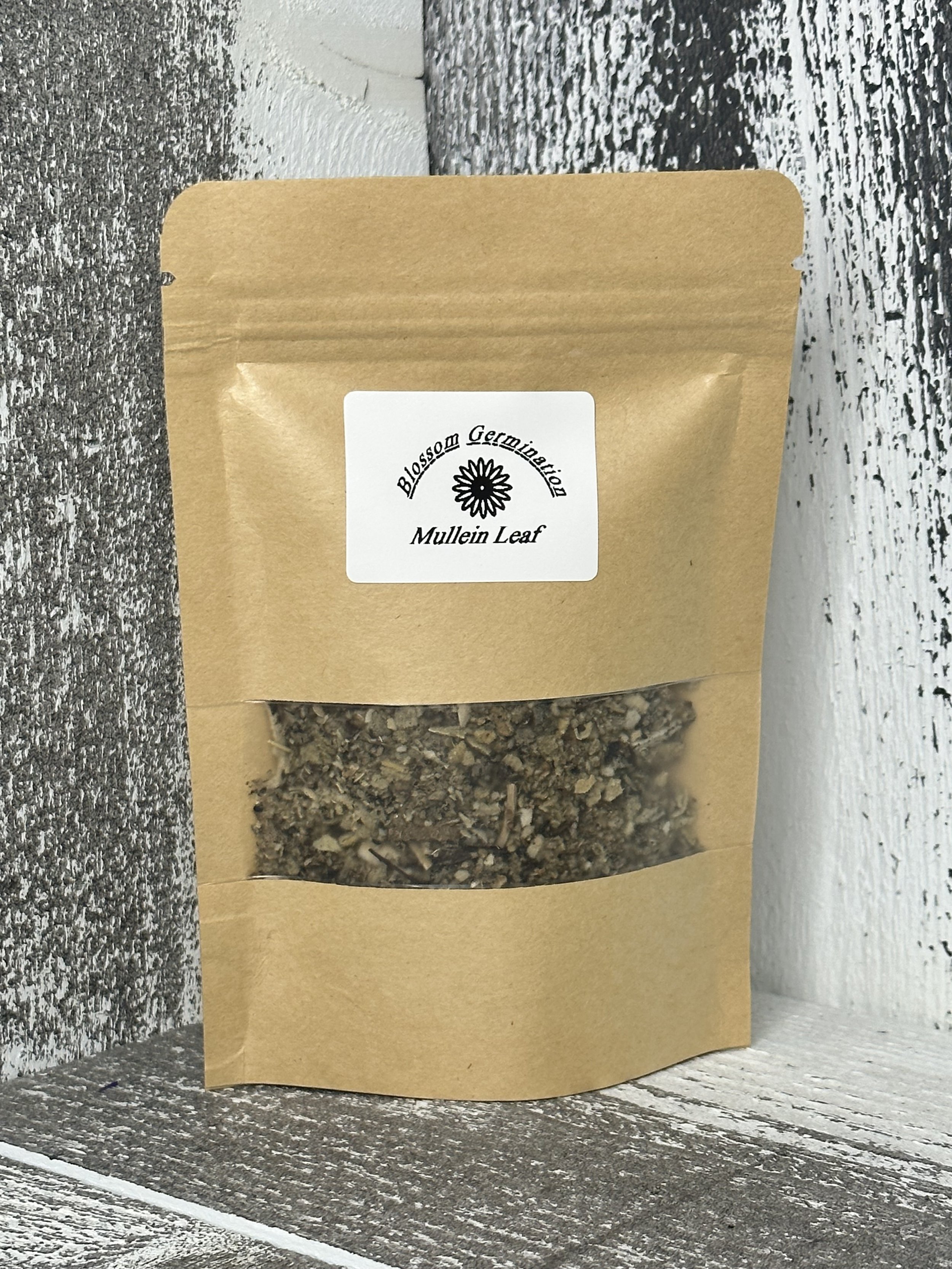 Image 1 of
Image 1 of


Mullein Leaf
Mullein, or Verbascum thapsus, is a biennial plant found in Europe and North America. It grows in disturbed areas like roadsides and fields, featuring large, soft leaves and tall flower spikes that can reach six feet. The leaves are green to grayish-green, and the plant produces small, yellow flowers in the summer.
Traditionally, mullein leaves are used in herbal remedies for respiratory issues due to their soothing effects on the throat and lungs. They can also be made into teas or infused oils for natural health practices.
Mullein is beneficial for the environment, providing habitat for pollinators like bees and butterflies and improving soil quality with its deep roots. As a wildflower, it helps prevent erosion and supports biodiversity.
While mullein is valued for its health and ecological benefits, it’s important to gather it sustainably and be aware of allergies or sensitivities. Consulting with a healthcare professional before use is recommended.
Mullein, or Verbascum thapsus, is a biennial plant found in Europe and North America. It grows in disturbed areas like roadsides and fields, featuring large, soft leaves and tall flower spikes that can reach six feet. The leaves are green to grayish-green, and the plant produces small, yellow flowers in the summer.
Traditionally, mullein leaves are used in herbal remedies for respiratory issues due to their soothing effects on the throat and lungs. They can also be made into teas or infused oils for natural health practices.
Mullein is beneficial for the environment, providing habitat for pollinators like bees and butterflies and improving soil quality with its deep roots. As a wildflower, it helps prevent erosion and supports biodiversity.
While mullein is valued for its health and ecological benefits, it’s important to gather it sustainably and be aware of allergies or sensitivities. Consulting with a healthcare professional before use is recommended.
Mullein, or Verbascum thapsus, is a biennial plant found in Europe and North America. It grows in disturbed areas like roadsides and fields, featuring large, soft leaves and tall flower spikes that can reach six feet. The leaves are green to grayish-green, and the plant produces small, yellow flowers in the summer.
Traditionally, mullein leaves are used in herbal remedies for respiratory issues due to their soothing effects on the throat and lungs. They can also be made into teas or infused oils for natural health practices.
Mullein is beneficial for the environment, providing habitat for pollinators like bees and butterflies and improving soil quality with its deep roots. As a wildflower, it helps prevent erosion and supports biodiversity.
While mullein is valued for its health and ecological benefits, it’s important to gather it sustainably and be aware of allergies or sensitivities. Consulting with a healthcare professional before use is recommended.
